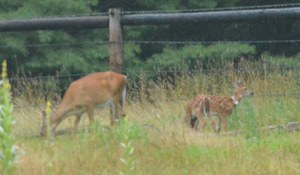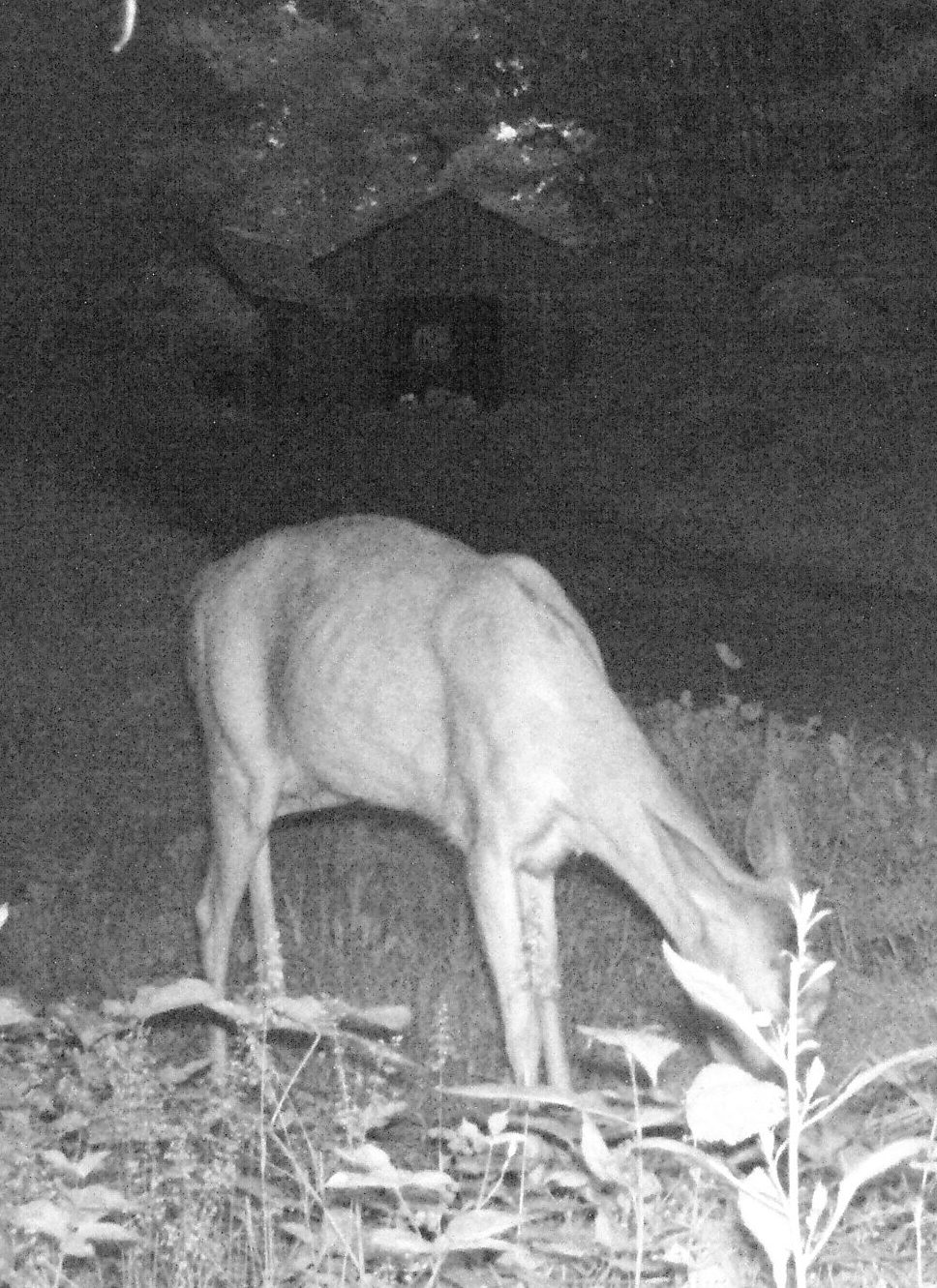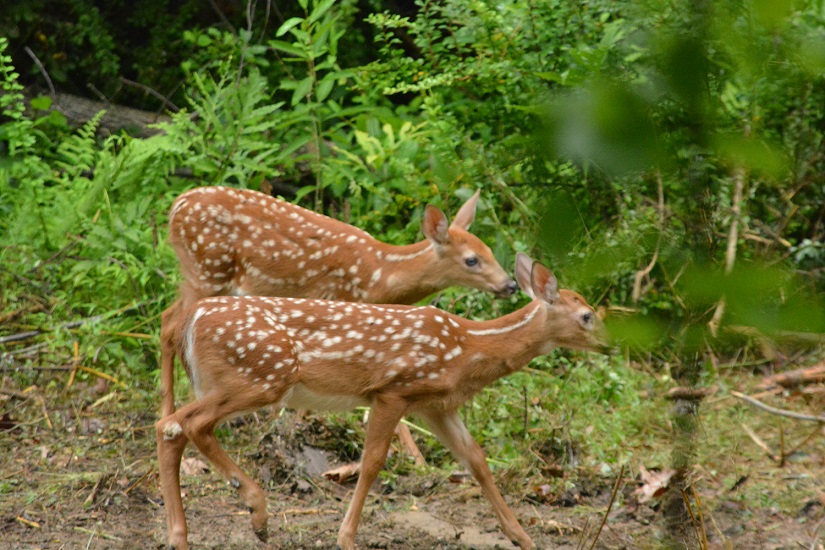The majority of fawn are already 8 weeks into their life adventure. And they are growing fast!
They have their mothers to thank for that. While fawns are looking strong and spunky, does are looking slight and weary road. There is no hiding the drain these last few months have placed on them.

As if 200 days of gestation weren’t enough, does have been cranking out gallons of milk to feed those cute little parasites.
 Lactation is the most energetically demanding activity of any mammal. Fawns are not born with a functioning rumen. It takes about 3 weeks for the various microbes to gather and grow after birth. In the meantime, mom is left holding the bag…literally. Look at the udder on this hard working mom. It’s easily discernible even in the dark!
Lactation is the most energetically demanding activity of any mammal. Fawns are not born with a functioning rumen. It takes about 3 weeks for the various microbes to gather and grow after birth. In the meantime, mom is left holding the bag…literally. Look at the udder on this hard working mom. It’s easily discernible even in the dark!
Animals need a minimum amount of energy to perform basic body functions like circulation, respiration, digestion, body temperature, and cellular maintenance. All the things your body does without you knowing or telling it. The energy required for this is known as basal metabolic rate (BMR). It is the rate of energy expenditure for your body to just exist.
Basal metabolic rate is the bench mark for comparing the amount of energy required to perform other functions like walking or running. For example, the energy required to walk is 2 times BMR for white-tailed deer; for running its 3-4.75 BMR.
Gestation requires 1.6 times BMR. Lactation requires an average of 2.3 times BMR. Peak lactation with twins requires 4.7 times BMR! For comparison, antler growth only requires 1.5 times BMR. And remember, does aren’t just laying around lactating. They are still being deer. Standing, walking, running, FORAGING – all these activities require energy above BMR.
By 10 weeks old, fawns have a fully functioning rumen which means no more free meals needed. Mom can start focusing on herself! It starts with a new “do.” Because of the energy requirements of lactation, does cannot start their fall molt until fawns are weaned.
Nursing does keep their summer pelage longer than bucks and other does that have weaned their fawns. Due to the energy demands of lactation, does cannot accomplish both at the same time. The high level of prolactin associated with milk production is contrary to the low level associated with hair growth. Declining prolactin is a signal to the body to produce a winter coat. The body’s endocrine system is like a crack administrative staff – taking care of all of the detailing so you can focus of the big picture – eating and not getting eaten!
So if you see a doe in the next couple of weeks and she looking more like Roseanne Conner than June Cleaver, you know why. Those cute little milk vampires have been sucking the life right out of her.
Wildlife Biologist
If you would like to receive email alerts of new blog posts, subscribe here.
And Follow us on Twitter @WTDresearch

